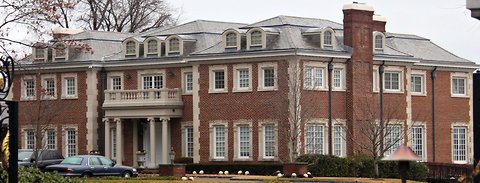 Chang W. Lee/The New York Times
Chang W. Lee/The New York Times
After our demographic profile of the 1 percent appeared on Sunday, there were a lot of questions from readers about the top 1 percent by wealth, rather than the measure we used, the top 1 percent by income.
The 1 Percent
Looking at the top of the economic strata.
We used income because the Census measures income, not wealth, and the Census contains the most timely data along with a large sample size, making it possible to look at income across many geographic and demographic categories.
But we also examined wealth through the Federal Reserve’s 2007 Survey of Consumer Finances. This survey is much smaller in scope, and somewhat outdated (a release based on the 2010 survey is expected later this year).
But an analysis of the Fed data is still revealing in that it shows the wealth gap, as measured by net worth, is much more extreme than the chasm as measured by income.
The Times had estimated the threshold for being in the top 1 percent in household income at about $380,000, 7.5 times median household income, using census data from 2008 through 2010. But for net worth, the 1 percent threshold for net worth in the Fed data was nearly $8.4 million, or 69 times the median household’s net holdings of $121,000.
Some readers wondered if the 1 percent by wealth weren’t an entirely different group of people from the 1 percent by income. But there is substantial overlap: the Fed data suggests that about half of the top 1 percent of earners are also among the top 1 percent in the net worth category.
Almost all the rest of the top earners are still in the top 5 percent when it comes to net worth.
As for high-net-worth families and how much they earn – more than 80 percent of them are in the top 5 percent when it comes to income.
Other nuggets about the wealthy from the 2007 Fed data:
— The wealthiest 1 percent took in about 16 percent of overall income — 8 percent of the money earned from salaries and wages, but 36 percent of the income earned from self-employment.
— They controlled nearly a third of the nation’s financial assets (investment holdings) and about 28 percent of nonfinancial assets (the value of property, cars, jewelry, etc.). These measures will be particularly interesting to revisit when the new, post-recession data arrives.
— Money may not buy happiness, but the Fed survey suggests it buys good health. About 90 percent of the 1 percenters describe themselves as being in excellent or good health, compared with 75 percent of everybody else. About 85 percent expect to live into their 80s, compared with 68 percent of everybody else.
— Nearly half of the 1 percenters own two or more pieces of real estate. That was true for just 5 percent of the rest of the population.
— Nearly a third of 1 percenters own a vehicle besides a car, compared with 14 percent of other households. And not just in the driveway. While the rest of us are slightly more likely to own a mobile home, 1 in 5 of the wealthiest Americans say they have a boat, plane or helicopter, compared with 1 in 22 in other households.
— About three-quarters of the wealthy said they spent less than they earned in the previous year, compared with about 44 percent of everybody else. This is also a category that will be fascinating to track in the post-recession data.
— When asked if they feel “lucky” in their financial affairs, nearly 80 percent of the super-rich strongly agreed. The rest of us? Fewer than one-third feel that financial good fortune is shining upon us.
Article source: http://feeds.nytimes.com/click.phdo?i=b9a836f059aa449a7970fff48ae19441